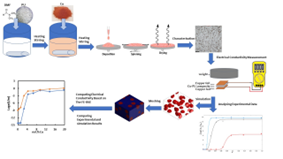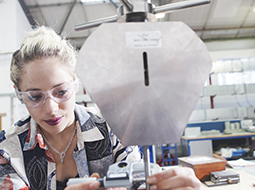-
Study
Study
Interested in studying at Northumbria? With 31,500 students, Northumbria is one of the largest universities in the country, offering courses on either a full-time, part-time or distance learning basis.
Discover more-
Undergraduate
- Undergraduate Study Degree
- Undergraduate Open Day & Events
- Application Guides
- Northumbria University UCAS Exhibitions
- Foundation Years
- Undergraduate Fees & Funding
- School & College Outreach
- Continuing Professional Development
-
Postgraduate
- Postgraduate Study Degree
- Postgraduate Research Degrees
- Postgraduate Open Days and Events
- Postgraduate Fees & Funding
- Flexible Learning
- Thinking about a Masters?
- Continuing Professional Development
- Change Direction
-
Student Life
- The Hub - Student Blog
- Accommodation
- Life in Newcastle
- Support for Students
- Careers
- Information for Parents
- Students' Union
- Northumbria Sport
-
-
International
International
Northumbria’s global footprint touches every continent across the world, through our global partnerships across 17 institutions in 10 countries, to our 277,000 strong alumni community and 150 recruitment partners – we prepare our students for the challenges of tomorrow. Discover more about how to join Northumbria’s global family or our partnerships.
Discover more-
Applying to Northumbria
- European Union
- Our London Campus
- Northumbria Pathway
- International Events
- Entry Requirements
- Agent Network
-
Northumbria Language Centre
- Faculty Requirements
- Acceptable English Requirements
- Pre-Sessional English and Study Skills
- Academic Language Skills Programmes (ALS)
-
International Fees, Funding & Scholarships
- International Undergraduate Fees
- International Undergraduate Funding
- International Masters Fees
- International Masters Funding
- International Postgraduate Research Fees
- International Postgraduate Research Funding
- International Money Matters
-
Life at Northumbria
- International student support
- The Hub - Student Blog
- Careers
-
International Mobility
- Current Northumbria Students
- Incoming Exchange Students
-
-
Business
Business
The world is changing faster than ever before. The future is there to be won by organisations who find ways to turn today's possibilities into tomorrows competitive edge. In a connected world, collaboration can be the key to success.
Discover more -
Research
Research
Northumbria is a research-rich, business-focused, professional university with a global reputation for academic quality. We conduct ground-breaking research that is responsive to the science & technology, health & well being, economic and social and arts & cultural needs for the communities
Discover more -
About Us
-
About Northumbria
- Our Strategy
- Our Staff
- Our Partners
- Student Profiles
- Alumni Profiles
- Leadership & Governance
- Academic Departments
- University Services
- History of Northumbria
- Contact us
- Online Shop
-
-
Alumni
Alumni
Northumbria University is renowned for the calibre of its business-ready graduates. Our alumni network has over 236,000 graduates based in 178 countries worldwide in a range of sectors, our alumni are making a real impact on the world.
Discover more - Work For Us


 Nosocomial
infections are the most prevalent adverse event in healthcare settings
worldwide. Generally, polymers used in textiles (such as nylon and polyester)
have the potential to propagate microorganisms since the three key conditions
for microorganism development, namely moisture, nutrients, and temperature, are
concurrently present in polymers in contact with human skin. One of the most
effective approaches to prevent the proliferation of resistant bacterial
strains is the use of durable antibacterial textiles in hospitals. Metal-based
nanoparticles (MNPs) have a higher surface area with greater leaching speed
than larger particles. Therefore, polymers containing MNPs are currently
considered attractive candidates to release higher concentrations of metal ions
with a more potent antimicrobial effect. This polymer composite can produce a
response to physical and chemical stimuli such as a change in heat, electrical
current, temperature, moisture and force. Furthermore, certain polymers are
naturally flexible that can accommodate the body's motions. This mean that this
polymer composite in the cloth would ultimately be used as wearable sensors.
Nosocomial
infections are the most prevalent adverse event in healthcare settings
worldwide. Generally, polymers used in textiles (such as nylon and polyester)
have the potential to propagate microorganisms since the three key conditions
for microorganism development, namely moisture, nutrients, and temperature, are
concurrently present in polymers in contact with human skin. One of the most
effective approaches to prevent the proliferation of resistant bacterial
strains is the use of durable antibacterial textiles in hospitals. Metal-based
nanoparticles (MNPs) have a higher surface area with greater leaching speed
than larger particles. Therefore, polymers containing MNPs are currently
considered attractive candidates to release higher concentrations of metal ions
with a more potent antimicrobial effect. This polymer composite can produce a
response to physical and chemical stimuli such as a change in heat, electrical
current, temperature, moisture and force. Furthermore, certain polymers are
naturally flexible that can accommodate the body's motions. This mean that this
polymer composite in the cloth would ultimately be used as wearable sensors.



